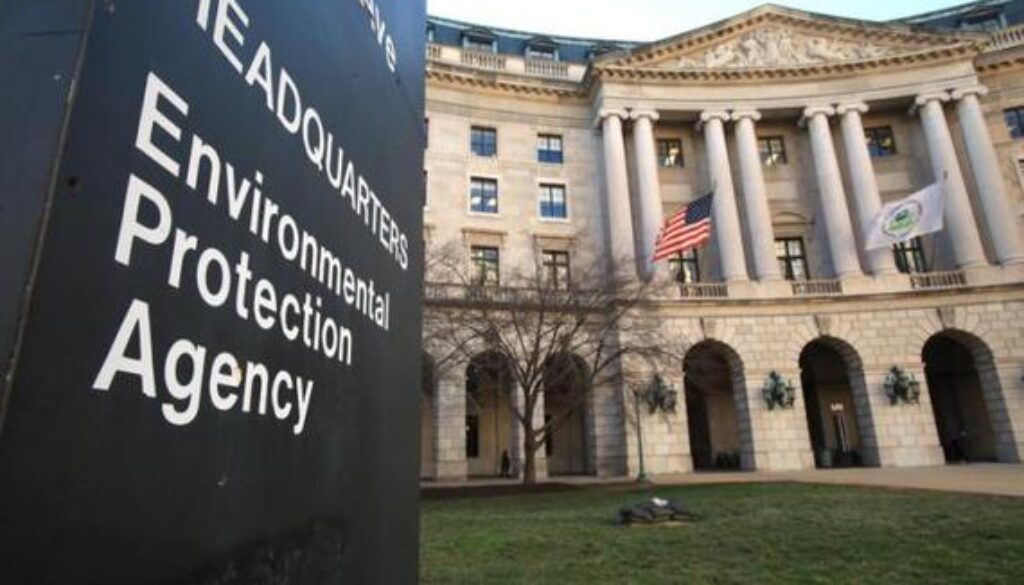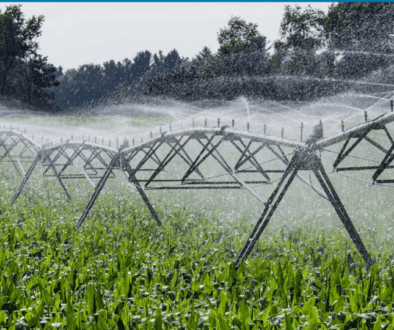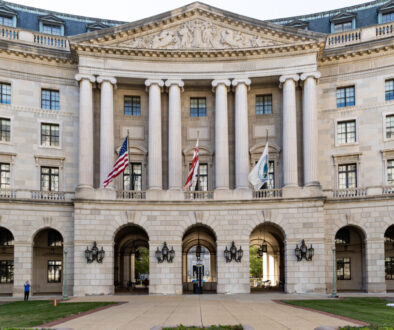Environmentalists push EPA ‘hazardous’ PFAS designation, industries seek exemptions
The Environmental Protection Agency (EPA) is facing competing calls on its pending rule to designate two notorious “forever chemicals” as hazardous substances, with environmentalists pushing for swift issuance of the rule while industry groups are seeking exemptions to the plan.
Representatives from non-profits, water agencies, industrial sectors and more have met in recent weeks with officials from the EPA and the White House Office of Management & Budget (OMB) to discuss the proposed rule. In the meetings, groups have weighed in on whether or not they oppose the regulation, and offered data on several projected costs of the rule.
Some industries fear they will have to incur massive investment costs to in technologies to manage the, tracking and reporting requirements around per- and polyfluoroalkyl substances (PFAS) that come with the designation.
The National Waste & Recycling Association has warned that compliance with the rule could cost municipal solid waste landfills between $996 million and $6.279 billon per year.
Supporters of the rule, including Environmental Working Group (EWG) and the Center for Environmental Health (CEH), used their meetings with Biden administration officials to call for the EPA to follow through with its regulation. EWG says the rule, if finalized, would help jumpstart the process of cleaning up sites across the United States contaminated with PFAS, which are known as “forever chemicals” because they do not naturally break down.
The pending EPA proposal would designate two types of PFAS – perfluorooctanoic acid (PFOA) and perfluorooctanesulfonic acid (PFOS) – as hazardous substances under the Comprehensive Environmental Response, Compensation, and Liability Act of 1980 (CERCLA), also known as the Superfund law. Designation will require reporting of PFOA and PFOS releases that meet or exceed the reportable quantity for the substances, allowing federal, state, local and tribal authorities to collect information on the location and extent of those releases, according to a summary of the rule on OMB’s website.
The EPA submitted the proposed rule for OMB pre-publication review on January 10, a mandatory step before the agency can publish the regulation in the Federal Register and start a public comment period on it. The White House’s Unified Agenda of pending federal rules, last updated in the fall, predicted a March release for the CERCLA rule that the agency missed.
It follows an advance notice of proposed rulemaking that former EPA Administrator Andrew Wheeler signed January 14, 2021, seeking public input on which authorities the agency should use to tackle PFOA and PFOS, including regulation under CERCLA.
The Biden EPA last October released a “PFAS Strategic Roadmap” outlining its plans for tackling the forever chemicals, which includes the proposal “to designate certain PFAS as CERCLA hazardous substances to require reporting of PFOA and PFAS releases, enhance the availability of data, and ensure agencies can recover cleanup costs” The roadmap says the proposed rule is expected this spring, with a final rule expected in summer 2023.
Environmentalists offer support for CERCLA rule
In a January 28 meeting with EPA and OMB officials, representatives from EWG highlighted the group’s work on mapping PFAS contamination across the United States. Documents from the meeting posted to the White House’s website include a map of 679 military sites with known or suspected discharges of PFAS, and a map of known or suspected industrial PFAS dischargers.
The documents also include a July 3, 2019, EWG article calling for a CERCLA hazardous waste designation for PFAS, to “jumpstart the process of identifying and cleaning up PFAS-polluted communities. PFAS chemicals also build up in our bodies and can stay there for decades. So, the longer communities continue to be exposed to PFAS, the greater the risks they face.”
EWG also said a CERCLA designation would help force agencies like the Department of Defense (DOD), who are responsible for sites with known or suspected PFAS contamination, to act.
Representatives from CEH, in their March 4 meeting with the administration, presented documents warning about the adverse impacts of PFAS on water quality, including contamination of fish and polluting drinking water in environmental justice communities.
CEH has previously offered support for legislation that would force the EPA to designate all PFAS as hazardous waste under CERCLA as a key step toward protecting public health.
White House hears push for regulatory exemptions
OMB and EPA officials also heard significant pushback on the proposed rule from groups representing many different sectors, with several asking to be exempted from the regulation.
Some of the biggest concerns about the rulemaking are from water agencies, as highlighted by a March 2 meeting of the Biden administration and the National Water Resources Association (NWRA) and Association of California Water Agencies (ACWA).
“We write to urge you to carefully consider in the rulemaking process the potential financial consequences of a hazardous substance designation for public water and wastewater agencies and the customers they serve. Water and wastewater agencies have not caused PFAS contamination, and their wastewater and biosolids should be exempt from CERCLA’s requirements,” the groups wrote in a March 2 letter to OMB.
NWRA and ACWA say they support the EPA’s efforts to limit and ultimately end PFOA and PFOS water contamination by several industries, but warn of the “unintended consequence” that a Superfund law designation could create for public water and wastewater treatment facilities.
“CERCLA permits those who are identified as responsible parties to seek financial payment from other parties who were not deemed responsible parties. Without the exclusion of water and wastewater treatment facilities, public water agencies may be brought in as a party to these cleanup cases, which may harm the affordability of water for the households they serve,” their letter states. They want the EPA to exempt their facilities from the CERCLA rule’s requirements.
Separately, the National Association of Clean Water Agencies (NACWA) and the Association of Metropolitan Water Agencies met with the administration on March 17, highlighting a June 2021 NACWA letter to the EPA on liability concerns for publicly owned treatment works (POTWs) that asked for a “narrow” carveout from the rule for those facilities.
“A hazardous substance designation under [CERCLA] offers a promising approach of advancing remediation and funding opportunities for heavily contaminated sites through a polluter pays model, but it does not afford publicly owned utilities certainty or safe harbor for responsibly managing ongoing inputs to the sewer system,” the letter said. “The potential unintended consequences of a CERCLA hazardous substance designation are of great concern to the clean water community, particularly around how a designation will impact managing massive tons of biosolids that arrive at POTWs on a constant basis and that are currently thoroughly regulated and managed in a manner that is safe and sustainable.”
In its February 23 meeting with the administration, the International Liquid Terminals Association (ILTA) – representing almost 80 companies handling infrastructure, transportation and storage for more than 1,500 bulk liquid facilities – asked to be excluded from the rule.
Firefighting foams containing PFAS have contributed significantly to the widespread problem of the forever chemicals contaminating water supplies across the country. But ILTA says such foams are crucial for quickly putting out fires at bulk liquid facilities, and that the EPA should provide an exemption to the CERCLA rule for the industry. “Until the transition to alternative foams is complete across the industry, the risk of future liability should not weigh against a facility’s options to respond to fire events,” the group told OMB and EPA staff.
Waste groups say technology lacking
The National Waste & Recycling Association, in its February 7 meeting with EPA and OMB officials, said there are no commercially proven full-scale technologies for removing and managing PFAS in landfill leachate. Based on an estimated 16.1 billion gallons of leachate generated each year in the United States, the additional cost to municipal solid waste landfills of having to manage PFAS could be up to $6.279 billion, the group said.
In a January 27 meeting with the administration, the U.S. Chamber of Commerce and other groups representing an array of industries also pushed back on the need for the rule.
One of the documents that the organizations submitted for the meeting is a May 11, 2021, letter to EPA Administrator Michael Regan faulting the potential regulation.
Designating PFOS and PFOA as hazardous substances “will have significant adverse implications throughout society and the economy without commensurate benefit in reducing human and environmental exposure to these chemistries. The scope of liability under CERCLA sweeps in multiple, disparate companies, local governments, family businesses, and other organizations potentially liable for a single site. It is then left to lengthy and complicated litigation to sort out responsibilities; this often takes decades,” says the letter signed by 24 groups including the Chamber, Airlines for America, the American Petroleum Institute, the National Association of Manufacturers, the National Mining Association, and others.
Other groups that have met with the administration about the rule include the American Forest & Paper Association on January 31, the American Chemistry Council on February 14, and the Utility Solid Waste Activities Group and other organizations on March 8.



